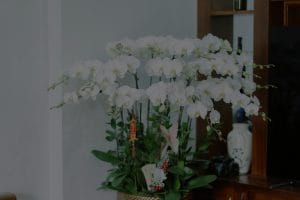**Abstract:** Discover the art of selecting colors for your home using Feng Shui principles. This guide offers practical insights into how color palettes can enhance energy flow in different rooms.
Understanding Feng Shui and Color Psychology
Feng Shui is an ancient Chinese practice that emphasizes the balance of energy, or “Chi,” in our surroundings. One of the core elements of Feng Shui is color, which plays a significant role in influencing our emotions and well-being. Colors have psychological effects that can either uplift or drain our energy, making it essential to choose wisely based on the room’s purpose. By harmonizing color with the room’s function, we can create spaces that foster positivity, creativity, and tranquility.
Living Room: The Heart of the Home
The living room is often the gathering place for family and friends, making it vital to create an inviting atmosphere. Warm tones like soft yellows and earthy oranges can stimulate conversation and warmth, while cool blues and greens promote relaxation. Incorporating these colors can enhance social interactions and create a welcoming environment. Additionally, accenting with neutral shades can balance the energy, ensuring a harmonious space that encourages connection.
Bedroom: A Sanctuary for Rest
In the bedroom, the focus should be on creating a serene environment conducive to rest and intimacy. Soft pastels such as lavender, light blue, and pale pink are ideal for promoting calmness and tranquility. These colors are known to reduce anxiety and foster a sense of peace. Avoid overly bright or stimulating colors, as they can disrupt sleep and create restlessness. Instead, consider using deeper tones for accent pieces to add depth without overwhelming the senses.
Kitchen: The Energetic Hub
The kitchen is often considered the heart of the home, where nourishment and creativity converge. Bright colors like sunny yellows and vibrant reds can stimulate appetite and energy, making them ideal for this space. However, it’s essential to balance these energetic hues with softer neutrals to avoid overwhelming the senses. Incorporating natural elements, such as wood or green plants, can enhance the kitchen’s energy, fostering a nurturing and lively atmosphere.
Home Office: A Space for Focus and Productivity
In a home office, the color palette should encourage concentration and productivity. Cool colors like soft blues and greens can promote focus and clarity, while pops of energizing colors like orange can stimulate creativity. It’s crucial to create a balance that prevents distraction while still inspiring innovation. Using a combination of these colors can help maintain motivation and clarity during work hours, ensuring a productive environment.
Bathroom: A Retreat for Relaxation
The bathroom is often a personal retreat where one can unwind and rejuvenate. Soft whites, light blues, and greens create a spa-like atmosphere that promotes relaxation. These colors evoke a sense of cleanliness and tranquility, making them perfect for a space dedicated to self-care. Incorporating natural elements like stones or plants can further enhance this calming effect, creating a serene sanctuary for unwinding after a long day.
Final Thoughts: Personalization is Key
While these guidelines offer a solid foundation for choosing colors based on Feng Shui principles, personal preference should not be overlooked. Each individual’s connection to colors is unique, and incorporating personal touches can enhance the energy in your home. Experimenting with different shades and combinations can help you discover what resonates best with your spirit, creating spaces that feel authentically yours. Remember, the ultimate goal is to create a harmonious environment that nurtures your well-being and enhances your life.










